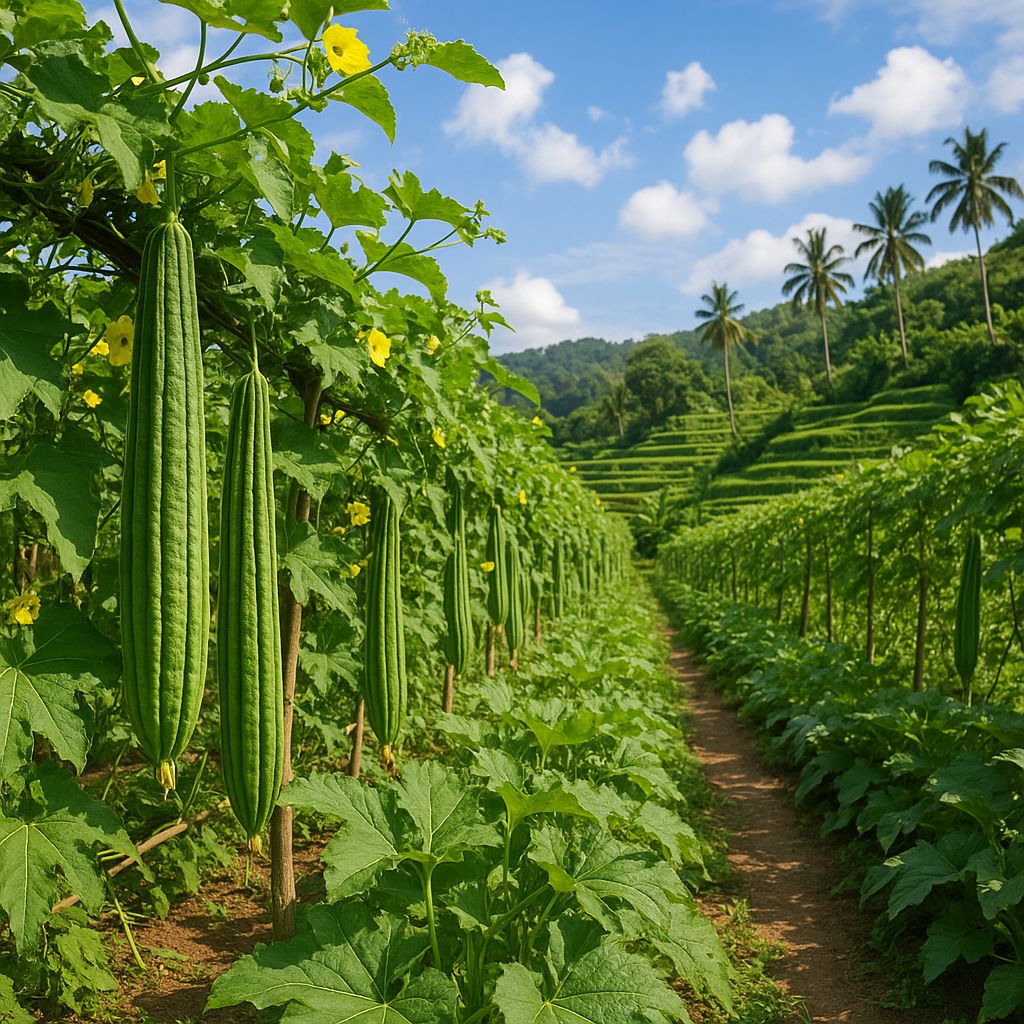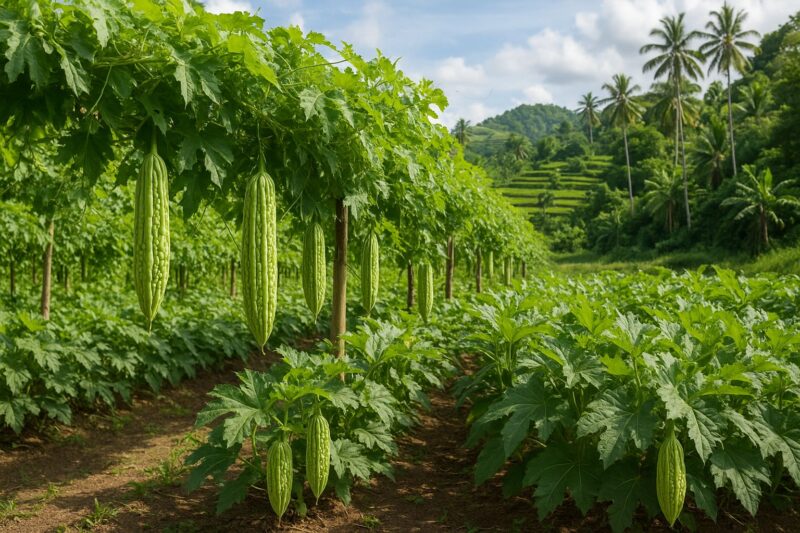Sponge gourd—patola—climbs its way into Filipino kitchens, turning up in tinola, ginisang gulay, and even refreshing salads in Bicol’s coconut-rich dishes. Its pale green, ridged fruits mature fast, often within fifty days of flowering, making patola a favorite for home gardeners and smallholders alike. But despite its reputation for being an easy vine, patola does require some careful attention under tropical conditions. Over several seasons here in Bulacan, and swapping notes with growers in Cavite, Iloilo, and even rooftop farmers in Makati, I’ve honed a routine that coaxed prolific, tender harvests. Let me share what I’ve learned—warts and all—so you can skip a few of my early stumbles.
First, variety choice sets the tone. Local long-podded types—sometimes called “filipino patola”—produce fruits up to twenty centimeters long and resist heat in lowland provinces. In cooler upland zones, bush varieties with shorter pods tend to set fruit more reliably when nights dip below twenty degrees Celsius. I plant both in Bulacan: the long vines along a fence for bulk cooking, and compact bushes in containers for quick morning harvests. It’s not perfect balance, but it works.
Soil preparation can’t be rushed. Patola vines crave rich, friable soil with good drainage. In clay-heavy areas like parts of Bulacan, I dig in two wheelbarrows of homemade compost per ten square meters and a generous handful of rice hull ash to lighten the mix. If you garden near sandy coasts—say, in Iloilo or Cebu—add coconut coir or well-rotted manure to hold moisture without compaction. A quick pH test aiming for around six to seven keeps nutrients available. I learned the hard way that unamended clay leads to stunted vines and a few angry neighbours complaining about my dusty paths.
Timing matters. In most lowland regions, sow seeds or transplant seedlings at the start of the rainy season—June to July—so young vines establish before the heaviest downpours. In upland areas like Baguio, growers wait until November, after the coolest nights pass. I start seeds in late May under shade cloth then move seedlings out by June, protecting them from the midday sun until they reach twenty centimeters tall.
Support is essential. Patola vines scramble skyward, and without a trellis they tangle and shade themselves out. I build simple A-frames from bamboo or repurpose old wire fences, spacing supports every meter. When shoots reach about thirty centimeters, I weave tendrils into the structure, coaxing vines upwards. Vertical growth improves airflow—critical in our humid months—and makes harvesting a simple, back-friendly reach rather than a crawl under dense foliage.
Feeding combines steady nutrition with restraint. At planting, I add a handful of bone meal for phosphorus in the hole and top dress with compost. Once vines start flowering—usually four to five weeks in—I side-dress with decomposed chicken manure or a balanced organic fertilizer beyond the drip line. Too much nitrogen, I discovered, yields luxuriant leaves but fewer flowers. Moderation is, perhaps, the word.
Pollination often happens naturally, courtesy of bees and hoverflies, but in gardens with few pollinators a light hand can help. Early each morning, I transfer pollen from male flowers (long stems, no swelling at the base) to female blooms (short stems with tiny fruit buds). Just a few gentle strokes kickstart fruit set, and I’ve found it raises yields by nearly twenty percent in my Bulacan beds.
Watering demands consistency. Deep, infrequent irrigation—early morning—is my routine. I water so the soil is moist down to twenty centimeters but never soggy. In containers or raised beds—common in urban Makati or Mandaluyong—I water daily during dry spells, checking soil by feel: if a handful crumbles, it’s time; if it clumps, I wait. A layer of rice straw mulch helps retain moisture, suppress weeds, and eventually enrich the soil as it breaks down.
Pests and diseases are minimal but real. Squash vine borers can attack patola’s nearest cousins; I wrap stem bases with foil as a simple barrier. Aphids show up occasionally—especially after heavy rains—and a quick spray of neem oil or garlic–soap infusion usually keeps them under control. Powdery mildew may appear on older leaves in mid-season; a weekly dusting of rice flour mixed into a light spray often halts its spread. I’m not entirely convinced it’s foolproof, but it’s kinder than chemical fungicides.
Harvest arrives fifty to sixty days after flowering when pods are slender and smooth—about ten to twelve centimeters for hybrids, fifteen to twenty for heirlooms. Overripe fruits become fibrous and hollow-sounding; I learned to tap each gently and look for that crisp snap. Frequent harvesting—every two to three days—encourages new flowers and prolongs the season, sometimes into the late rainy months.
One particularly soggy season in Bulacan, after a week of near-constant rain, I feared patola vines would drown. By pruning the densest leaves, reinforcing lower sections of my trellises, and lifting some vines onto spare supports, the plants rallied and produced a late flush of baby pods the size of green beans—tender and surprisingly tasty. That resilience, I think, is patola’s charm: adapt it with the right tweaks, and it rewards you again.
Whether you spread sprawling vines across open fields or raise compact bushes on balconies, mastering soil health, vine support, balanced feeding, moisture management, and simple pest checks will yield fresh sponge gourds season after season from Luzon to Mindanao. It might not be the flashiest crop—no dragon fruit drama here—but for dependable, nutritious vegetables, patola holds its own.
I’m open for consulting and speaking opportunities on sustainable vegetable production and urban agriculture across the Philippines. Let’s grow together.
#Patola #SpongeGourd #Kalabasa #PhilippineFarming #SustainableAg #UrbanGardening #ConsultingAvailable #SpeakingOpportunities




